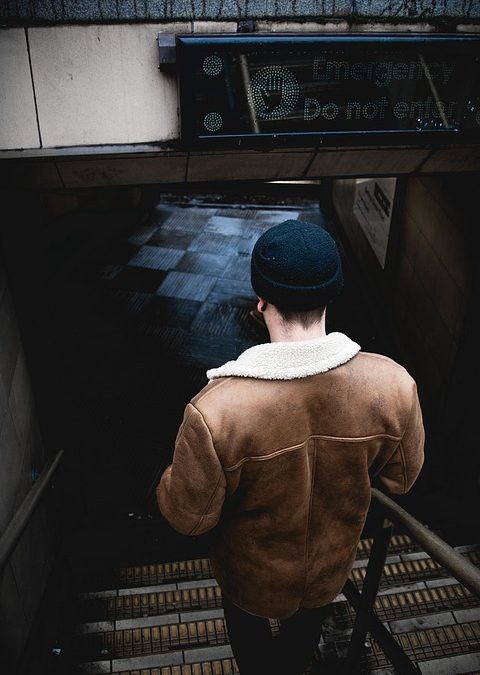The leather jacket is synonymous with timeless style. It’s been around for over a century, and even after all of those years, it remains one of the most popular types of outerwear in the world. Worn by men and women alike, the leather jacket is the perfect choice of outerwear, regardless of the season or weather. But if you’re planning to invest in a new leather jacket, you should follow the tips listed below to preserve its look and integrity.
Choose High-Quality Leather
The first step in preserving a leather jacket is to choose high-quality leather. There are several different types of leather used to make jackets, not all of which are high quality. Suede leather, for instance, is characterized by a soft underside of split grain. It’s considered a lower quality type of leather; therefore, it’s best to avoid it when choosing a jacket. Instead, consider buying a jacket made of nappa leather. It’s arguably the highest grade leather, featuring an exceptional level of softness and comfort that’s not found elsewhere.
Don’t Stretch It
Try to avoid stretching your leather jacket. It’s not uncommon for individuals to pull on rug on their jacket pockets, only to discover later that the leather has stretched. Leather, like most fabrics, will stretch when enough force is exerted upon it. And once a leather jacket has stretched out, it’s difficult to repair. Thankfully, this problem is easily avoided. Simply avoid pulling or tugging on your leather jacket.
Beware of Cologne, Perfume or Body Sprays
What’s wrong with wearing cologne, perfume or body sprays? Well, spraying them while wearing a leather jacket could damage your jacket. The problem with cologne, perfume and similar types of body sprays is that many of these products contain alcohol. When this alcohol gets on your jacket, it will cause the leather to dry out and potentially crack open. You can still wear cologne, perfume or body sprays, but you should apply it when you aren’t wearing a leather jacket.
Go Genuine
Of course, it’s also recommended that you choose a jacket made of genuine leather. In recent years, there’s been an influx of companies producing and selling fake leather jackets. From afar, the fake material looks like real leather. Upon closer inspection, however, you’ll quickly realize it’s not the same. Fake leather jackets have a strong chemical-like odor, whereas genuine leather jackets have a mild and pleasing scent. Furthermore, fake leather jackets are somewhat rough, whereas genuine leather jackets are soft. Because of these stark nuances, it’s recommended that you spend the extra money on a genuine leather jacket while avoiding those made of fake or faux leather materials.
Keep It Dry
The golden rule of owning and preserving a leather jacket is to keep it dry. Granted, exposure to small amounts of moisture isn’t going to cause any noticeable problems. On the contrary, it’s perfectly fine to wear a leather jacket in the rain. With that said, however, allowing your leather jacket to become soaked in water and not drying it shortly afterwards can damage the material. Leather is a highly porous material with thousands of small holes or “pores.” Moisture can settle inside these pores, damaging the leather from the inside out. If you want your leather jacket to last and withstand the hands of time for countless years to come, you need to keep it dry.
Check the Care Label
We’ve talked about this before on our blog, but it’s worth mentioning again that manufacturers usually include instructions on how to clean and care for their respective leather jackets. Known as the care label, this is usually found inside the jacket’s collar. Most leather jackets require similar steps for cleaning and maintenance. However, there are some nuances between the different types that may affect the way in which they are cleaned and maintained. Therefore, it’s a good idea to check the care label of your leather jacket to determine the best way to preserve it.
Spot Clean
No matter how hard you try to prevent it, your leather jacket will inevitably attract dirt, grime and stains. Maybe you accidentally spill your morning coffee, for instance, only to discover an unsightly stain on your jacket. Well, the good news is that you can usually clean minor stains such as this by spot treating the affected area. After drying up as much of the stain as possible, blot the area with a damp washcloth. Assuming the stain is still fresh and hasn’t settled into the leather, this should make easy work of it. And for tougher stains, refer to the manufacturer’s instructions on the care label.
Dry Cleaning
Unless otherwise stated in the care label, leather jackets are usually safe for dry cleaning. In fact, dry cleaning is one of the best all-around ways to clean a leather jacket. The term “dry cleaning” is somewhat of a misnomer, however. It still uses liquid to clean garments. It only uses chemical liquids instead of water. Nonetheless, dry cleaning is an effective cleaning solution for leather jackets and other garments that are too dirty for conventional spot cleaning.
Condition It
Perhaps the most important step in preserving a leather jacket is to condition it. This process involves applying a leather conditioning product like saddle soap to moisturize the leather and protect it from dehydration. While too much moisture is bad for leather, dryness is also bad. Therefore, you must condition your leather jacket on a regular basis to preserve its appearance and integrity.
Wear It
No, that’s not a typo. Wearing your leather jacket on a regular basis can actually help to preserve its appearance and integrity. As you wear it, it will “break in” the leather material, resulting in a more natural texture and appearance.


